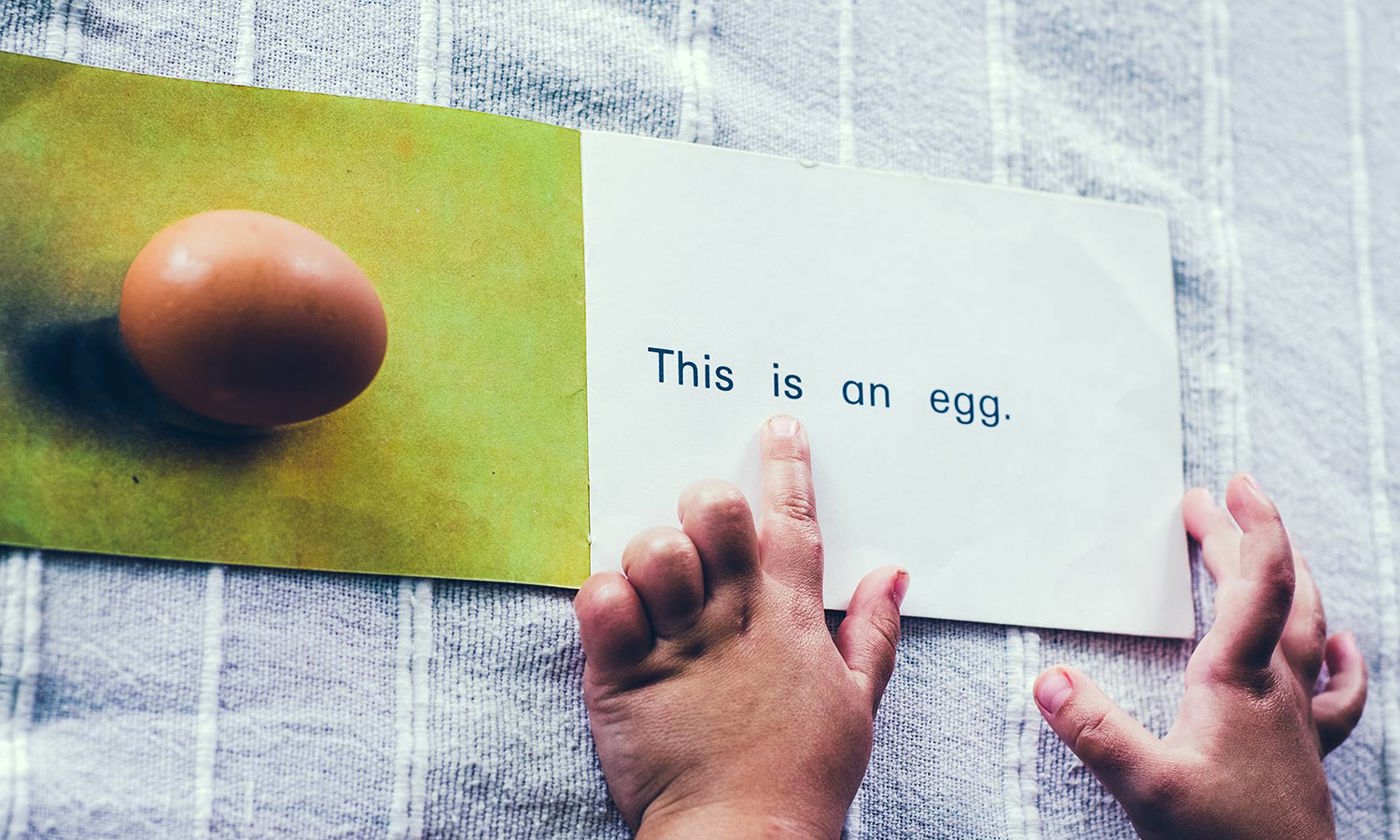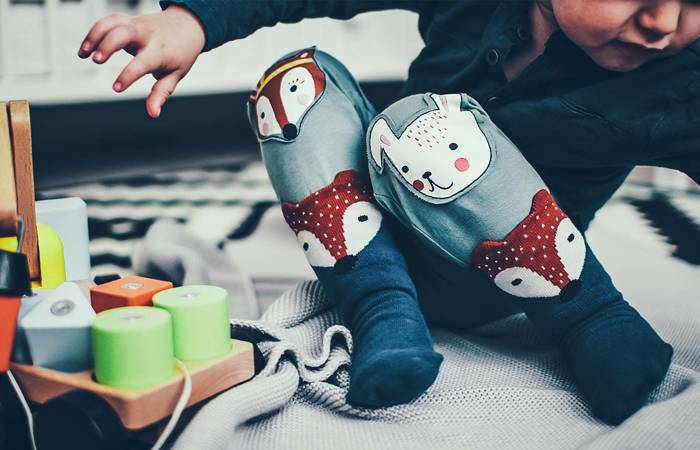Like what you see?
Sign up to receive more free parenting advice.
Thank you for subscribing to our newsletter!
Early Learning

Credit: iStock.com/chameleonseye
Young children learn literacy (the ability to speak, listen, read and write) in many ways.
For example, children often memorise songs, finger plays and stories through repetition and mimicry. Very young children can learn to recognise letters and numbers by repeated exposure and copying.
However, there are some experiences that contribute to very young children’s literacy learning that are less visible, much more difficult to describe, and yet so important.
Symbolic play
Playing with the things in their environment as if they are something else is one of these experiences.
This is because understanding that something can be represented by something else is the basis of understanding language. Whether spoken or written, language is a symbolic system.
When we say ‘symbolic’, we mean that words and letters represent something.
Letters represent sounds and most words represent things that are part of our everyday worlds. For example, the word ‘cat’ represents a four-legged, furry animal that meows! The word ‘cat’ is thus a short-cut for a whole species, it is a symbol.
There are many symbols in our world. Think emojis: The smiley face represents a human emotion.
The beginnings of young children’s understandings about symbols and representation are found in play.
In symbolic play, one thing is treated as if it were something else. When you see a child putting a plate on their head and pretending it is a hat, they are experimenting with symbols and representation: the idea that one thing can ‘be’ (represent) something else.
When they pick up a wooden block and talk into it as you would a mobile phone, they are exploring the possibility that this thing can be used as a ‘short-cut’ for something else.
If we don’t understand what symbolic play is, then we as parents are tempted to see play as good fun, entertaining, but not necessary for literacy development.
Stay up to date with the latest news and articles from First Five Years
Thank you for subscribing to our newsletter!
The power of pretending
Understanding how ‘short-cuts’ or symbols can be, and are, used is the foundation of literacy learning.
The use of symbols is not characteristic of all play. But symbolic behaviour underlies the characteristic of pretence (or pretending), that we associate with the play of young children. The child expresses ideas about the world, feelings and needs through symbolic thought, symbolic play and symbolic role-playing.
If we can appreciate that symbolic play can take many forms, but these all entail creating meaning and expressing that meaning in some way through gesture, language, intonation and objects, then we see play and literacy differently.
Children who become skilled at symbolic transformations in their play are preparing to understand some of the symbolic systems used in written language.
Let’s explore this idea a little further. The ability to abstract the essential features of an object and mentally represent them (with some other object or later with a spoken or written word) is called ‘representational competence’.
So, perhaps next time you see your child using an object as if it were something else, you will recognise this ‘competence’ as an important step in their literacy learning.
However, I am sure you are thinking about the world of difference between using one object to represent another and using a word to represent something.
Literacy researchers use the word ‘distance’ to talk about the difference between objects (or ideas) and the symbols that represent them.
Is this idea of ‘distance’ useful for understanding early literacy learning?
In a world of icons, logos and emojis, we are using symbols almost constantly in our everyday communication of meaning. Some of these symbols look very similar to the thing, emotion or idea they are representing. Some don’t. An emoji of a tree looks like a tree, the smiley face has some features like a human face.
Where the symbol seems to have no visual connection to what they are representing, we say there is a ‘wide distance’ between them.
For example, there is little distance where one object simply represents another; for example, a stick represents a horse. However, if we think about the distance between the word ‘cat’ and the concept of a cat, we see the widest symbolic distance possible. The word ‘cat’ has nothing about it that resembles a cat at all.
Developing abstract thinking
It is through our experience with cats (whether plastic, real or with pictures) that we have made the connection between the word cat and the concept of a cat. Researchers call this process ‘symbolic transformation’. Symbolic transformation is based on the understanding that the marks on a page (whether words or numbers) generate meaning.
Symbolic play forms the foundation upon which children develop their abilities to engage in abstract thinking in literacy, mathematical reasoning and problem solving.
This foundation is at risk if structured, discrete and isolated ‘code breaking’ activities are introduced too early and too often.
Play offers the environmental conditions for children to interact, in ways that stimulate symbolic thought. Encourage your child to pretend. Give them unstructured time to imagine and act out ideas.Dr Susan Krieg
Give children time to imagine
If it is so important, how do we as parents support young children’s representational competence?
Firstly, recognise that the environment and experience play a critical role in the development of symbolic thought. The things and places a baby or young child has to play in, and with, can stimulate ideas and increase their capacity to think abstractly and symbolically.
Play offers the environmental conditions for children to interact, in ways that stimulate symbolic thought. Encourage your child to pretend. Give them unstructured time to imagine and act out ideas.
Provide materials that are open-ended: these are things that can be many different things. Think empty cardboard boxes of all sizes: they can be houses, cupboards, forts, hiding places and so many more. Think pieces of fabric: they can be capes, robes, magic carpets or curtains.
Play creates an environment where meaning, not sounds or letters or counting by rote, drive children’s earliest experiences in literacy and numeracy. Although specific skills, such as alphabet knowledge and numeral recognition are important to literacy and numeracy development, if the eagerness to use these skills is to be retained, children must acquire and co-ordinate these skills through interaction with meaningful experiences.
Playing with a kitten is the basis of understanding what the word ‘cat’ means. Playing with mud will help your child understand not only what the word ‘mud’ means but also words such as ‘squishy’, ‘slimy’ and ‘slippery’ will make much more sense.
So, as you share these experiences with your child, remember that they are not only enjoyable, they are also contributing to their longer-term literacy learning.








